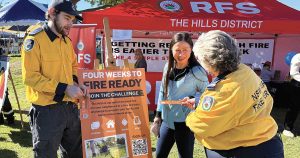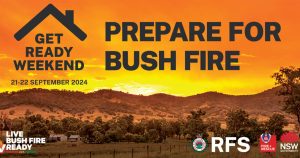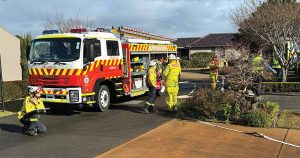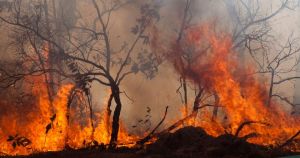On the 14th of September 2021, Tom Richmond OAM, JP, BA, DT, died. Few people have had a more significant influence on the lives of the residents of Hornsby Shire and, more particularly, its rural areas than the late Tom Richmond. As an educator, historian, social activist and sports coach, his abilities affected the lives of so many families.
As a teacher, Tom was an inspiration to the students he taught. He once said that he had no need for his own children as he had thousands of them. As a dedicated teacher, he took on board the problems of those who were his pupils, the thrills of their success and the worries about their failures.
In later years, when talking with parents and former students, he remembered their names and enquired about their lives. Former students never forgot his care and enthusiasm to foster in them their own love of the History and English he taught.
He was an unconventional teacher. He was always ready to try something new. He was empathetic with students in those difficult times in their development when others had given up.
He was open and forthright in his advice, and he held strong views on our education system, which, on occasions, set him at odds with others. He was against private education, although he had spent his own school years at Barker College, between 1948 and 1957.
Tom started his teacher education at Wagga Wagga Teachers’ College. He graduated in 1960 and, at eighteen, began his career teaching at Woodenbong Central High School close to the Queensland border. In 1995, due to increasing deafness, he retired on medical grounds.
Over the intervening 36 years, he had completed a Bachelor of Arts degree through the University of New England, majoring in English, History and Psychology. He had been one of the youngest to hold certain positions within the Department. Along the way, he left his indelible mark on seven high schools.
He had established and coached cricket teams, established innovative approaches to student welfare, served in a school cadet corps, achieved success with the promotion of creative arts in a Western Sydney high school, saved a school from closing by overseeing its transition to a Creative Arts High School and established a unique historical resource for the study of local History in Galston.
The growth of population to the north of Castle Hill and public pressure resulted in the decision to build a new high school at Galston. The school was founded in 1972, and for the first two years, the students attended classes in Baulkham Hills High.
During the planning of the new school and at the start of construction, there was a suggestion that the stone of the cottage on the land, built by the Waddell Family, would make wonderful entry gates! The suggestion galvanised the local community into action.
The Education Department was convinced that the cottage, restored, would make an excellent real-life classroom to teach local and colonial history and foster the values of history in general. A Community Restoration Committee was formed under the Chair of local resident Miss Betty Archdale. Volunteers worked on the restoration.
When Galston High School opened in 1974, Tom Richmond became the Head Teacher of both English and History. For our community, this was fortuitous. No better person could have come to the community’s assistance. With his love of history, enthusiasm and drive, the community quickly swung behind him in making the restored cottage, now called “Waddell Cottage”, a special place for live history lessons.
It became an archive for family records researched by the students and a museum for a collection of local furniture and bric-a-brac. Research into clothing design and willing workers created a collection of period costumes for students to wear during their ‘ sleepovers’. Local history came alive, and Tom luxuriated in the delight of his students. They, in turn, came to love ‘Uncle Tom’ and gain, in many cases, a lifelong love of history, language and learning.
With all this enthusiasm for history, other community members saw a need for a historical society. Under the guidance of Mrs June Roughley, the Dural and District Historical Society was founded. Its aim was (and is) to record and preserve the area’s history, once known as ‘The Durals’.
These early settlements are now the villages of the upper Hills area, with only Dural and Middle Dural, retaining their original names after Upper and Lower Dural and North Colah changed theirs. After establishing the Historical Society, Tom was a regular guest speaker at monthly meetings, a three times June Roughley Memorial Lecture presenter and a guide on several river tours.
In 1986 Galston Primary School held its Centenary Celebrations. It was a huge success, largely because the community had developed an interest in its history, and Tom’s former students and their parents knew all about enjoying history. For a whole week, the population tried to live, as best they could, the life of one hundred years before.
So it is with a real sense of loss, we think of how this one man affected our community in so many ways. We are thankful for his many varied qualities, which showed us how to enjoy and understand our community’s uniqueness.




